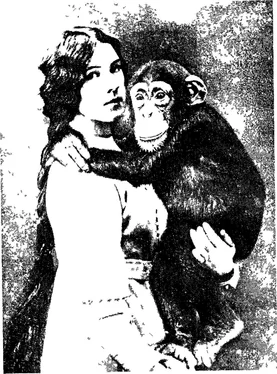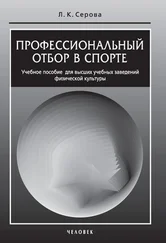Gillan D. J. Reasoning in the chimpanzee: II Transitive inference//J. Exptl. Psychol. Animal, Behav. Processes. 1981. V. 7. No. 2. P. 150–164.
Gillan D. J., Premack D., Woodruff G. Reasoning in the chimpanzee: I. Analogical reasoning//J. Exptl. Psychol. Animal. Behav. Processes. 1981. V. 7. No. l.P. 1-17.
Goldoviti D., Wahlsten D., Wimer R. E. (eds) Techniques for the Genetic Analysis of Brain and behavior: Focus on the Mouse. Elsevier, 1992.
Griffin D. R. Animal Thinking//Cambridge: Harvard Univ. Press, 1984 Harlow H. F. The formation of learning set//Psychol. Rev. 1949. V. 56. P. 51–65. Harlov/ H. F. The evolution of learning//Behavior and Evolution. Roe A., Simpson G. G. (eds.)/New Haven: Yale Univ. Press, 1958. P. 269–290.
Hay D. A. Essentials of Behavior Genetics//Melbourne: 1985. Hayes K., Hayes C. The intellectual development of a home-raised chimpanzee//Proc. Am. PhiL Soc. 1951. V. 95. P. 105–109.
Herman L. M. Cognition and language competencies of bottlenosed dolphins//Dolphin Cognition and Behavior: A comparative approach. Hillsdale, N.-Y., 1986.
Herrnstein R. J. Levels of stimulus control//Cognition. 1990. V. 37. P. 133–166. Herrnstein R. J. Objects, categories, and discriminative stimuli//Animal Cognition./ Eds. H. L. Roitblatt, T. C. Bever, H. S. Terrace. Hillsdale, N.-Y.: Eribaum, 1984. P. 233–261.
Herrnstein R. J., Loveland D. H. Complex visual concept in the pigeons//Science. 1964. V. 146. No. 3645. P. 549–551.
Herrnstein R. J., Vaughan W., Mumford D. В., et al. Teaching pigeons an abstract relational rule: lnsideness//Perception and Psychophysics. 1989. V. 46. P. 56–64.
Hodos W., Campbell С. В. G. Scala Natura: Why there is no theory in comparative psychology?//Psychol. Rev. 1969. V. 76. P. 337–350.
Hopkins W. D.,Morris R. D., Savage'Rumbaugh E. S. et al. Hemispheric priming by meaningful and nonmeaningful symbols in language-trained chimpanzees (Pan troglodytes): further evidence of a left hemisphere advantage//Behav. Neurosci. 1992. V. 106. No. 3. P. 575–582.
Hunt G. R. Manufacture and use of hook-tools by New Caledonian crows//Nature. 1996. V. 379. P. 249–251.
Hunter W. S. The delayed reaction in animals and children//Behav. Monogr. 1913. V. 2. P. 1–86.
Immelman K. Introduction to Ethology//N.-Y.-London: Plenum Press. 1980. Jarrard L. E. On the role of the hippocampus in learning and memory in the rat// Behav. neural biol. 1993. V. 60. P. 9–26.
Jerison H. J. Animal intelligence and encephalization//Phi]. Trans. Roy. Soc. L. 1985. V. 308. P. 21–35.
Jones Т., Kami! А. С. Tool-making and tool-using in the Northern blue jay//Science. 1973. V. 180. No. 4090. P. 1076–1078.
Jones В., Mormede P. (eds) Neurobehavioral Genetics. Methods and applications// Boca Raton: CRC Press, 1999.
Kamil A. C. A synthetic approach to the study of animal intelligence//Comparative Perspectives in Modern Psychology: Nebraska Symposium on Motivation, 35. Lincoln, Nebraska: Univ. of Nebraska Press, 1988. P. 230–257.
Karten H. J. Homology and evolutionary origins of the neocortex//Brain Behav. Evol. 1991. V. 38. P. 264–272.
Kellog WN., KellogL. A. The ape and the child//N.-Y.: McGraw-Hill. 1933.
Koehler 0. Thinking without words//Proceedings of the 14th Int. Congr. of Zoology. 1953, Copengagen. 1956. P. 75–88.
Le Roy I. Quantitative trait loci (QTL) mapping//In: (Jones В., Mormede P., eds.) Neurobehavioral Genetics. Methods and applications/CRC Press, Boca Raton, 1999. P. 69–76.
Lipp H.-P.,Pleskacheva M. G., Gossv/eiler H. ET at. The large outdoor radial maze for comparative studies in birds and mammals//Neurosci. Biobehav. Rev. 2001. (в печати).
Lipp Н.-P..Schv/eglerH.,Cmsio W. E. et a/. Using genetically-defined rodent strains for the identification of hippocampal traits relevant for two-way avoidance learning: a non-invasive approach//Experientia. 1989. V. 45. P. 45–53.
Lipp H.-P., Wolfer D. P. Genetically modified mice and cognition//Curr.Opin.Neu-robiol.l998.V.8.P.272–280.
Lipp H.-P., Wolfer D. P. Natural genetic variation of hippocampal structures and behavior//Neurobehavioral Genetics. Methods and Applications. Jones В., Mormede P., (eds.)/Boca Raton: CRC Press. 1999. P. 217–236.
Lorenz K.. Evolution and Modification of Behavior. L., 1966.
Mackintosh, N. J. Approaches to the study of animal intelligence//British J. Psycho]. 1988. V. 79. P. 509–525.
Mackintosh N. J. Abstraction and discrimination//In The Evolution of Cognition/ Heyes C., Huber L. (eds), The Vienna Series in Theor. Biol. A Bradford Book, The MIT Press. 2000. P. 123–143.
MaierN.R. T. Reasoning in white rats//Comp. Psychol. Monographs. V. 6.1929. P. 1—93.
Manning A., Dawkins M. S. An Introduction to Animal Behaviour//Press Syndicate, Univ. of Cambridge. 1998.
Marino L., Reiss D., Galiup G. G. Mirror self-recognition in bottlenose dolphins: implication for comparative investigations of highly dissimilar species//ln: S. T. Parker, R. W. Mitchell, M. L. Boccia (eds.) Self-awareness in Animals and Humans. Developmental Perspectives/Cambridge: Cambridge Univ. Press, 1994. P. 380–391.
Mason W. A. Primate social intelligence: contributions from the laboratory//Animal Mind-Human Mind. Griffin D. R. (ed)/Beriin: Spr. Verl., 1982. P. 131.
Matsuwwa T. Useofnumberbyachimpanzee//Nature. 1985. V. 315. P. 57–59.
Matsuwwa Т., Asano Т., Kubota К., Murofushi К. Asquisition and generalization of numerical labeling by a chimpanzee//In: Current perspectives in primate social dynamics/ Eds. D. M. Taub, F. A. King. N.-Y.: Van Nostrand, 1986. P. 416–430.
Mayford M., Abel Т., Kandel E. R. Transgenic approaches to cognition//Current Opinion in Neurobiology.1995. V. 5. P. 141–148.
Menzel E. W., Savage-Rumbaugh E. S., Lav/son J. Chimpanzee (Pan troglodites) spatial problem solving with the use of mirrors and televised equivalents of mirrors// J. Сотр. Psychol. 1985. V. 99. P. 211–217. См. гл. 7.
Miles L. N. Apes and language: The search for communicative competence.//Lan-guage in Primates: Perspectives and Implications/Luce J.de, Wilder H. T. (eds.)/N.-Y.: Springer, 1983. P. 25–43.
Mitani J. C., Brandt K. L. Social factors influence the acoustic variability in the longdistance calls of male chimpanzee//Ethology. 1994. V. 96. P. 233–252. col1_1 Development of a water-maze procedure for studying spatial learning in the rat//J. Neurosci. Methods. 1984. V. 11. P. 47–60.
Murofushi K. Numerical matching behavior by chimpanzee (Pan troglodites): Sub-itizing and analogue magnitude estimation//Japan. Psychol. Research. 1997. V. 39. № 3. Р. 140–153.
Nadel L. The psychobiology of spatial behavior: the hi ppocampal formation and spatial mapping//Behavioral Brain Reasearch in Naturalistic and Semi-Naturalistic Settings. Alleva E. et al.(eds)/NATO ASI Series, Series D: Behav. and Soc. Sc. Dordrecht, Boston, London: Kluver Academic Publishers, 1995. Vol. 82. P. 245–258.
Nesbitt M. N. The value of recombinant inbred strains in the genetic analysis of behavior//In: Techniques for the Genetic Analysis of Brain and Behavior: Focus on the Mouse. Goldovitz D., Wahlsten D., Wimer R. E. (eds)/Elsevier, 1992. P. 141–146.
O'Keefe J.,Nadel L. The Hippocampus as aCognitive Map//0xford: Oxford Univ. Press, 1974.
Читать дальше












